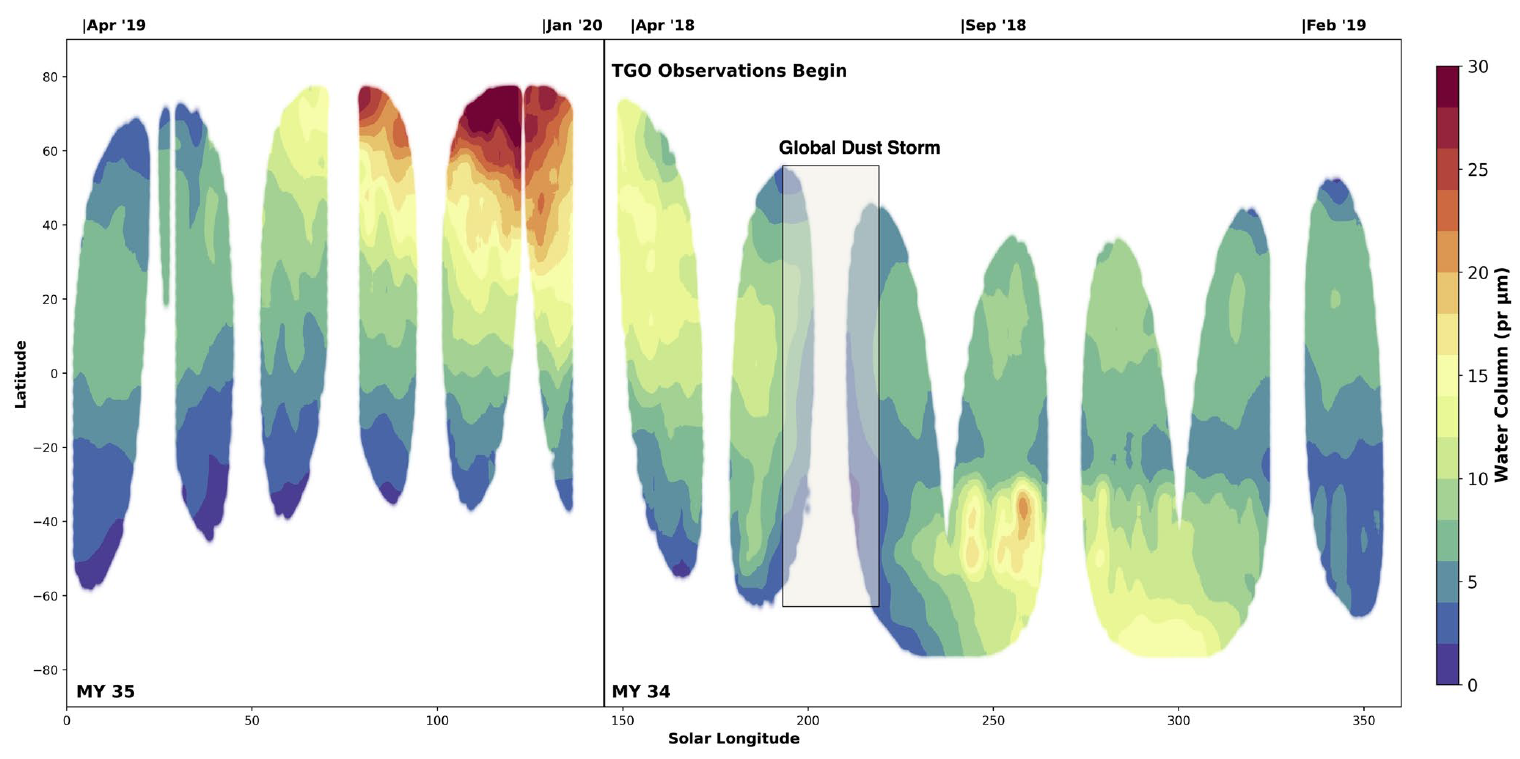JGR (2021) https://doi.org/10.1029/2021JE006878 http://oro.open.ac.uk/79769/2/Crismani%202021accepted.pdf
M. M. J. Crismani, G. L. Villanueva, G. Liuzzi , M. D. Smith , E. W. Knutsen, F. Daerden, L. Neary, M. J. Mumma, S. Aoki, L. Trompet , I. R. Thomas, B. Ristic, G. Bellucci, A. Piccialli, S. Robert, A. Mahieux, J.-J. Lopez Moreno, G. Sindoni, M. Giuranna, M. R. Patel, and A. C. Vandaele
Slightly less than a Martian Year of nominal science (March 2018–January 2020) with the ExoMars Trace Gas Orbiter has furthered the ongoing investigation of dayside water vapor column abundance. These dayside observations span latitudes between 75°S and 75°N, and all longitudes, which can provide global snapshots of the total water column abundances. In addition to tracking the seasonal transport of water vapor between poles, geographic enhancements are noted, particularly in the southern hemisphere, both in Hellas Basin, and in other regions not obviously correlated to topography. We report consistent water vapor climatology with previous spacecraft observations, however, note a difference in total water vapor content is noted. Finally, we are unable to find evidence for substantial diurnal variation in the total dayside water vapor column.

Observations of H2O vapor column abundances, zonally averaged in longitude and scaled by 6mbar, are presented for solar longitudes from the beginning of nominal science (March 2018) for almost an entire Martian Year (January 2020).

